National Comics #1 (1940)
by Will Eisner & Dave Berg
cover by Lou Fine
I rarely, if ever, pay attention to the difference between the cover date and the actual publishing date; for the Golden Age especially, it can be hard to get real data.
But I wonder: does this have a cover date of July just to be able to say that Uncle Sam was born on the fourth of July?

It would only be appropriate, since in-universe Uncle Sam was literally born July 4th 1776 as the physical embodiment of the United States.
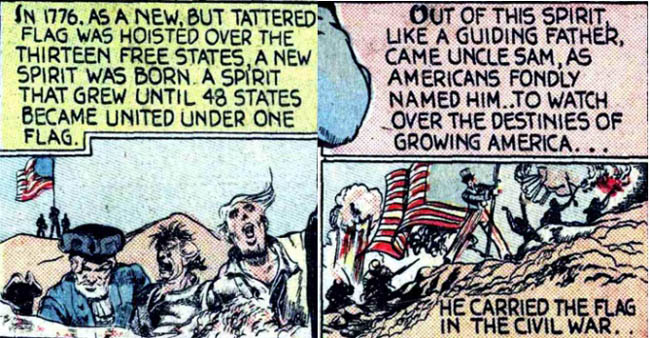
Little known fact, the American Civil War was actually ended by Uncle Sam.
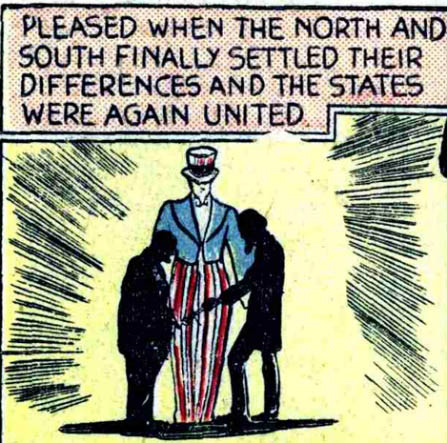
Interestingly, while the comic establishes that Uncle Sam shows up when the nation needs him, only two instances prior to 1940 are called out: the Civil War and WWI.
Admittedly I’m not a huge expert on American history, but I’m willing to bet there were at least another couple of instances when the nation could’ve used a superhero.

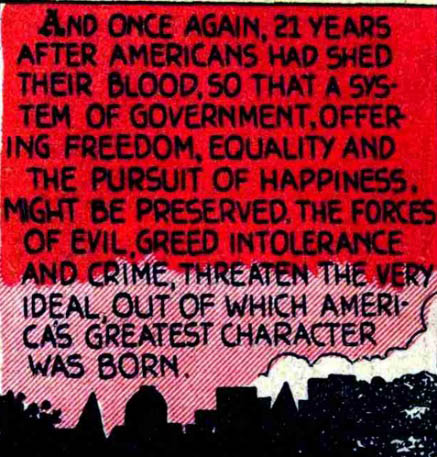
I do know a bit about the Great Depression, and it’s interesting to see that it goes completely unmentioned while the Dust Bowl is treated as the bigger deal.
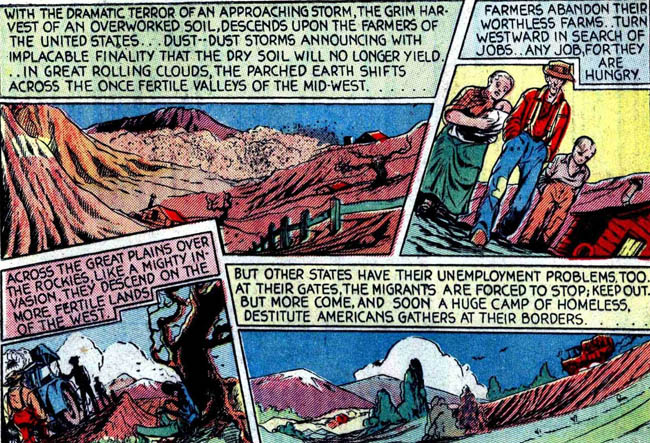
As I’ve said before, the VAST majority of Golden Age plots revolve around racketeers and saboteurs. This story is a bit more complex, because the main threat is the appeal of a dictatorship.
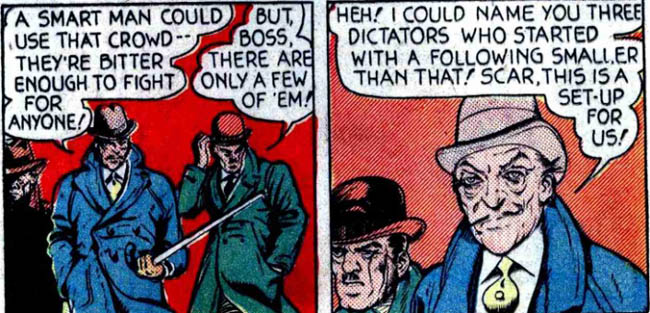
The villain is going to be the would-be dictator of America… Cobra.
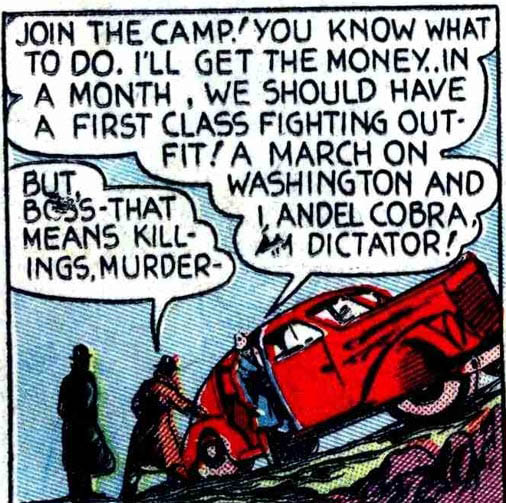
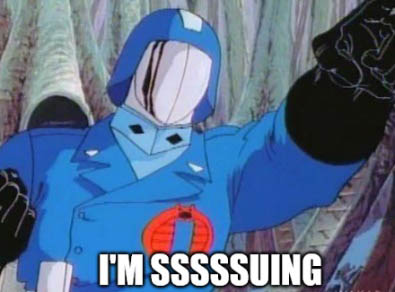
This comic is not exactly subtle in denouncing dictatorships, and it’s VERY clear what the “purple shirts” are based on.

You probably think this guy is going to turn into Uncle Sam, right?
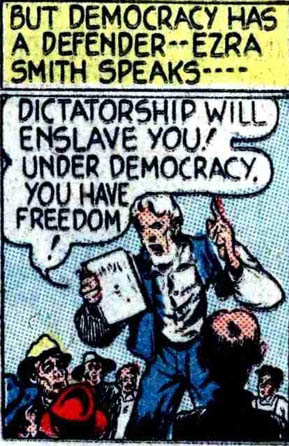
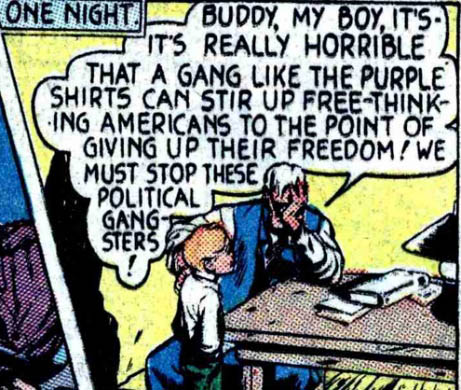
But no, he’s unceremoniously killed.
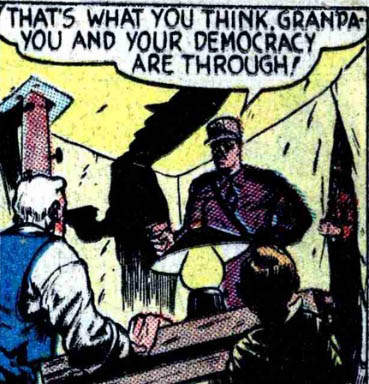
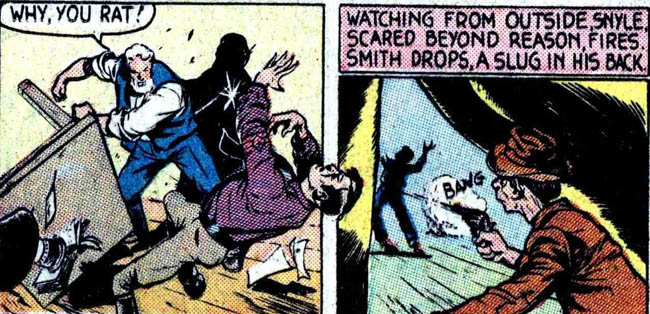
Ezra’s grandson leaves the town afterwards, in a couple of very moody panels.

And that’s when he runs into Uncle Sam!
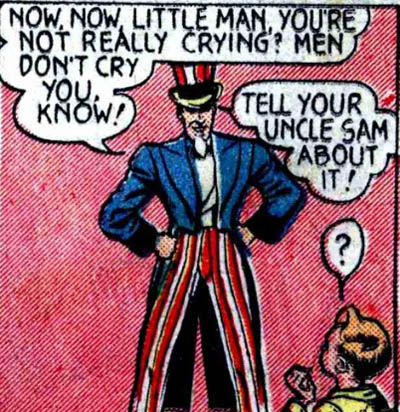
Uncle Sam sounds very corny, but… he’s UNCLE SAM, so I’m giving him a pass.
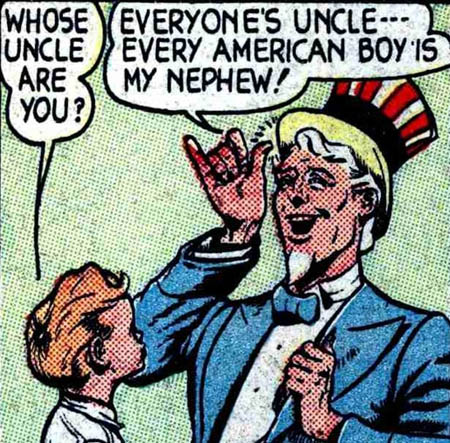

One of the guys who killed the kid’s grandfather has been following him, and he tries to kill Uncle Sam with a massive boulder. (!!!!)
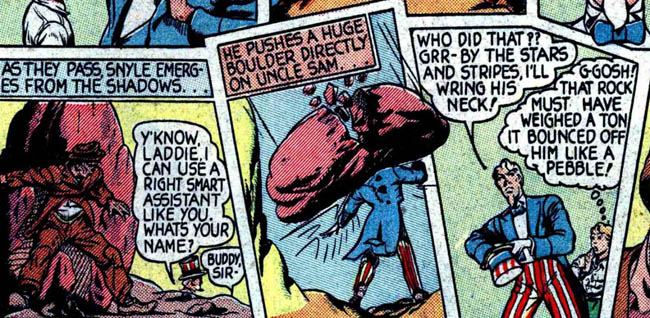

The would-be assassin gives one of the very best reactions to witnessing superpowers that I’ve ever seen!!!
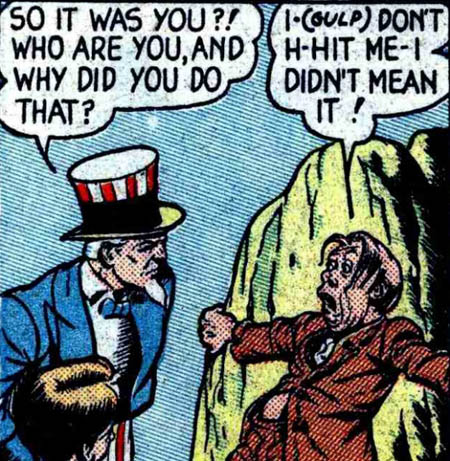
There are very few characters that can sell a sentence like “don’t go around dropping boulders on people”, but Uncle Sam is one of them.

The criminal runs back to Scar, one of Cobra’s lieutenants, to inform him of what he just saw.
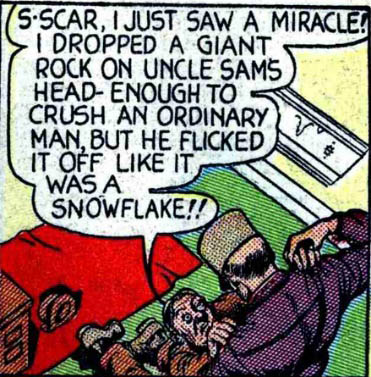
I get the feeling the lieutenant is based on a real person, but I can’t pinpoint which one.

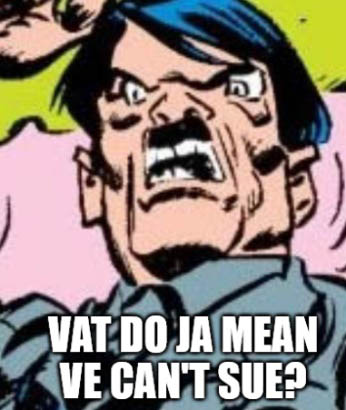
The Purple Shirts are no joke, having an entire secret base paid for by an undisclosed foreign country. I just can’t fathom which one could be behind it.
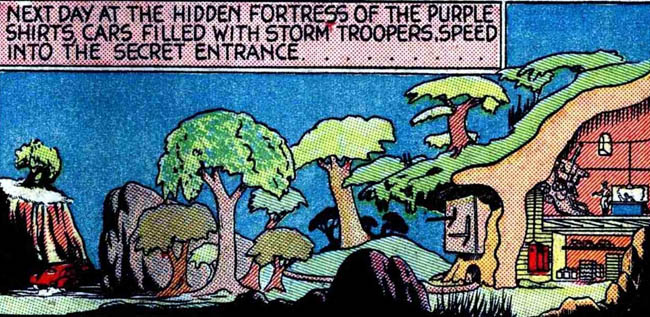
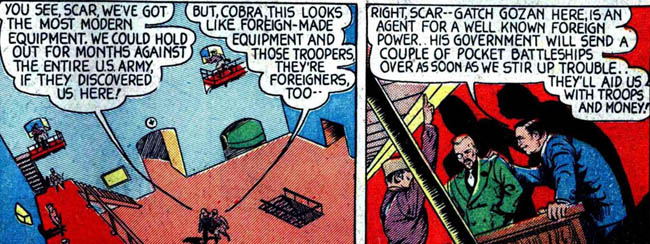
Once Uncle Sam learns about this, he wastes no time getting to the base. Bringing the kid with him for basically no reason.

Uncle Sam is basically unstoppable in the Golden Age…

…but I think it’s fair to say this series isn’t taking itself TOO seriously.
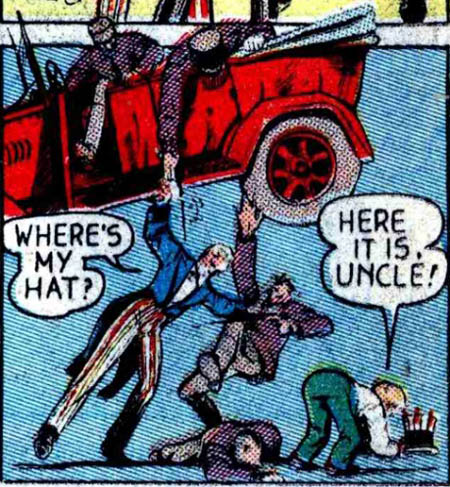
However, this was all just a distraction so that Cobra could kidnap the President!
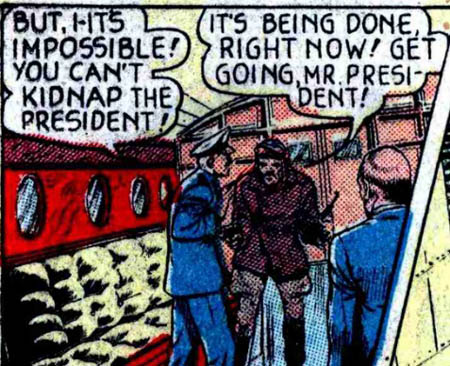
Red Skull only wishes he was as efficient as Cobra!!!
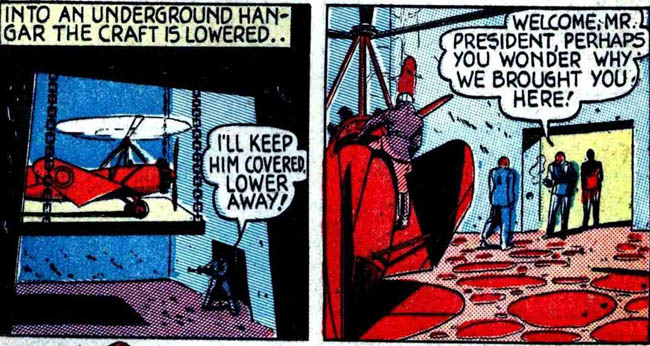

All while Uncle Sam infiltrates the base by having himself captured by the Purple Shirts.
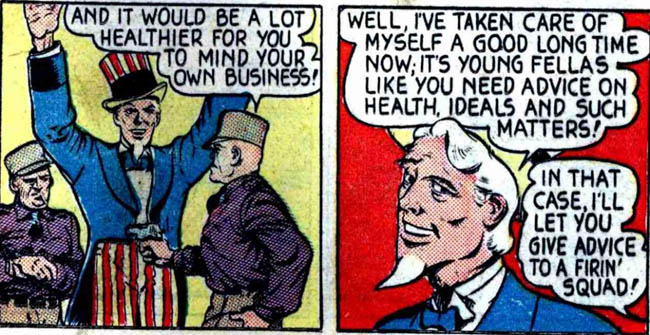
Not to get political, but this comic is depressingly still relevant after 84 years.

And that’s all it takes to convince people that joining a fascist organization bent on taking over the country in the name of a dictator is not a good idea.


Sounds legit.
Uncle Sam rescues the President in the most over-the-top way he can…
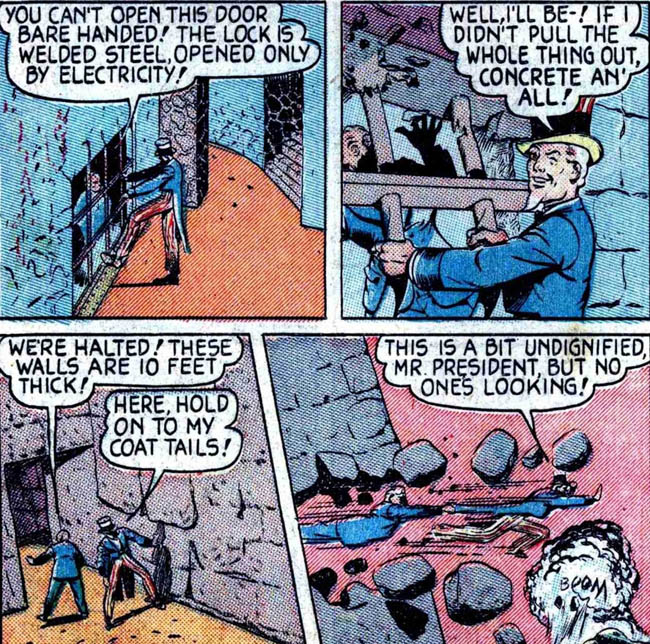
…and then single-handedly stops the Purple Shirt Rebellion. Told you he’s unstoppable.
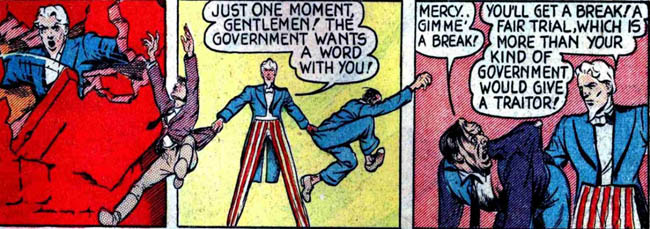
What do you mean “a publicity stunt”!? HE TORE DOWN A BUILDING WITH HIS BARE HANDS!!! IN PLAIN SIGHT!!!

And that’s the fourth-wall-breaking ending.
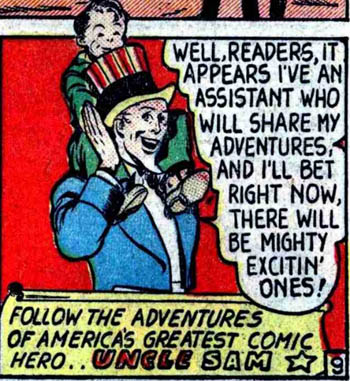
Historical significance: 07 / U

Silver Age-ness: 04 / S

Does it stand the test of time? 1776 / A
You see, The Shield? THIS is how you do an over-the-top patriotic superhero: you stay on theme!
It’s not exactly a subtle story, but it has a solid message and good artwork. Uncle Sam’s happy-go-lucky attitude towards everything makes him a fun character that can occasionally get serious. The only complain I have is that he’s even more overpowered for his setting that the early Superman. That being said, this is a VERY “of its time” story that would need a lot more meat to be done today.
Aside from the joke score, this is actually a 3/10 on the strength of the artwork and the basic message that depressingly enough still needs to be repeated.

How close is this to the modern character? 7/10
National Comics #5 expands Uncle Sam’s origin: he was created by a fusion of the “Spirit of America” and a soldier from the Revolutionary War, conveniently called Sam.
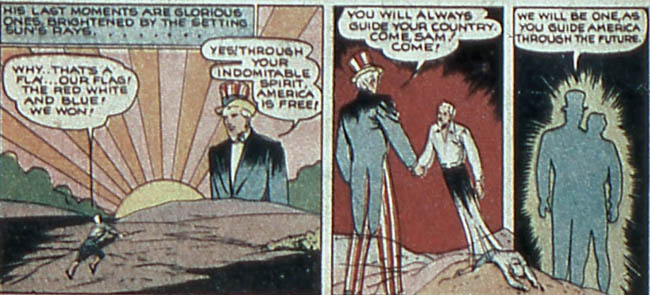
And that’s supposedly how Golden Age Uncle Sam works: whenever America needs him, the Spirit of America merges with some guy who BECOMES Uncle Sam.
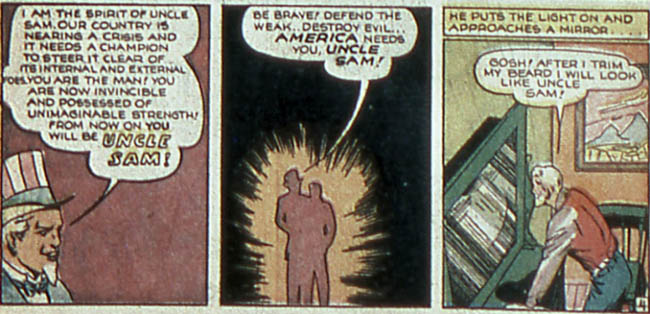
The kid is Uncle Sam’s regular sidekick throughout the Golden Age.
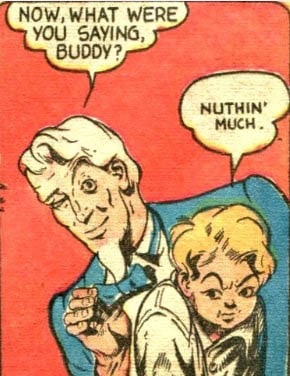
He doesn’t get any superpowers, but he helps Uncle Sam design and build a warship.
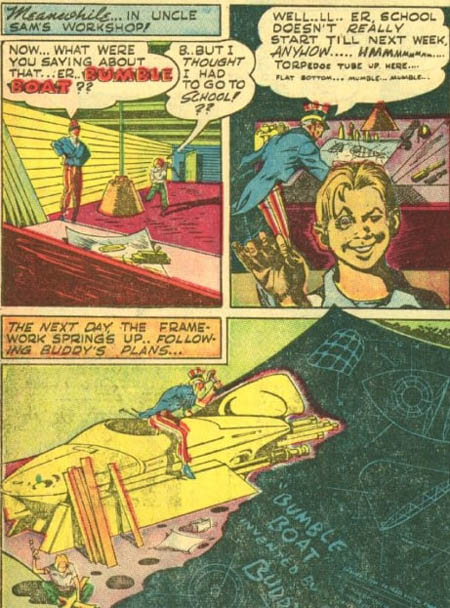
Not that Uncle Sam needs it! Seriously, NOTHING stops Uncle Sam in the Golden Age.
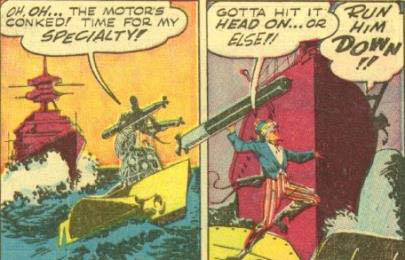

He’s also probably the very first superhero to interact with his own medium, jumping between panels to win a fight during this 1941 comic.
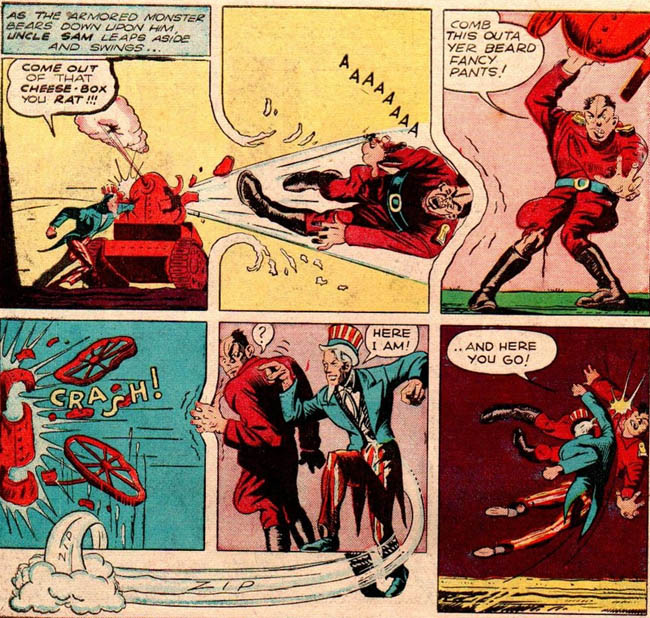
He was one of the most popular Quality Comics heroes, starring in 45 issues of National Comics and even getting his own digest series: “Uncle Sam Quarterly”, with 9 issues between 1941 and 1943.
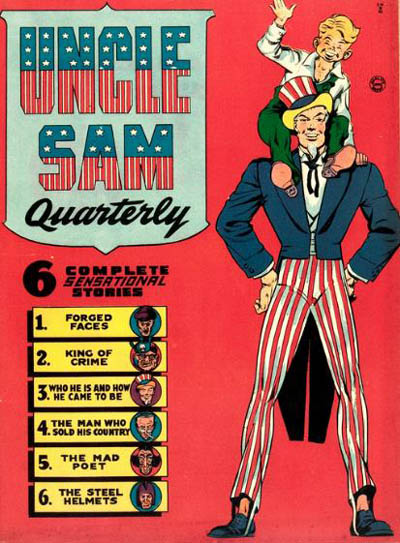
His last Golden Age story has a cover date of December 1944.
DC Comics acquired the rights of the Quality characters in the 50s, and Uncle Sam made several appearances in the 70s and 80s with the Freedom Fighters. See the Black Condor review for more information on those years, but Uncle Sam is given a surprising spotlight during Crisis.
Probably out of respect for the historical importance of Quality Comics.

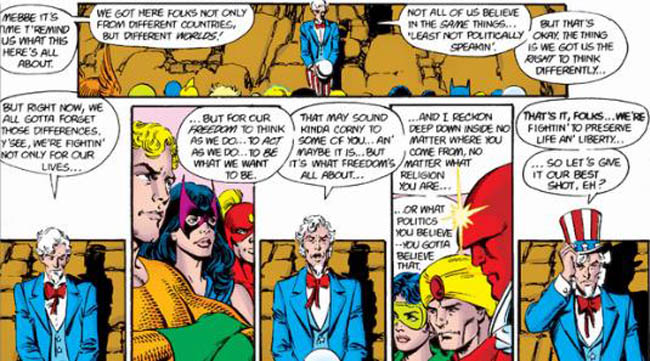
In the 1996 Spectre series, John Ostrander retooled the origin, with the Spirit of America being created by the Founding Fathers through an occult ritual and first taking the form of Minuteman, before later becoming the more familiar Uncle Sam. That’s a VERY brief summary, it’s a complex storyline.
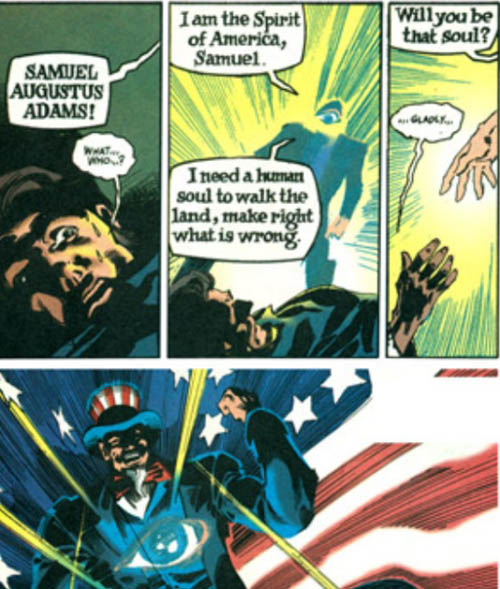
Future stories also expanded on the idea.



Aside from the Spectre issues, a Superman crossover and an Alex Ross special, Uncle Sam was only seen together with the other Freedom Fighters. Notably, in a 2006 regular series.
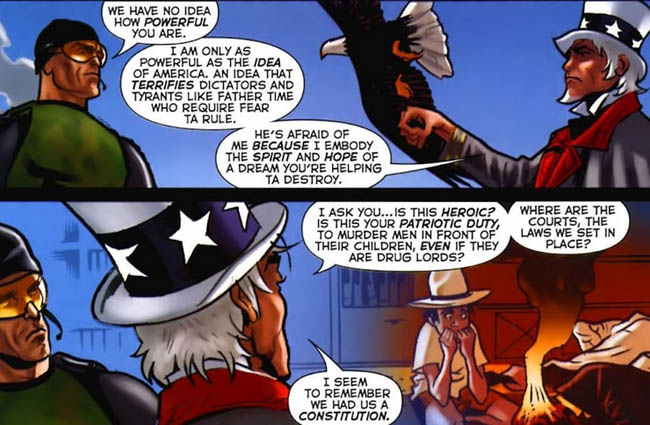
It’s probably the best way to use of Uncle Sam. He’s a serious character that just happens to look absolutely ridiculous.

For a character that is, essentially, Captain America with a silly hat, Uncle Sam can still be pretty awesome.
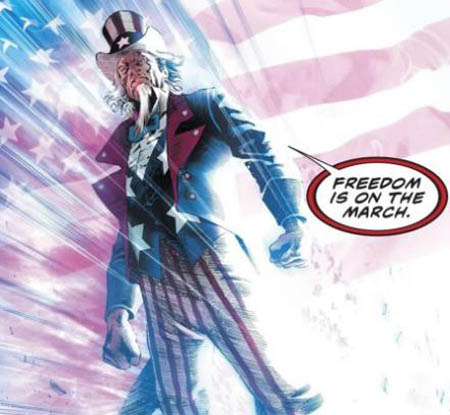
We’re still in the Golden Age period where each comic has tons of stories.
From war stories, to sport stories, to a “cartoonist detective”, to “funny stories” that aren’t that funny…

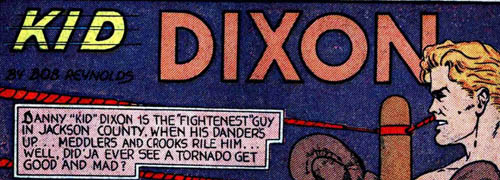

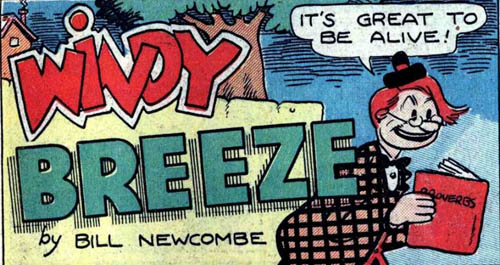
…to yet another female protagonist (Quality Comics has way more of those than DC at the moment)…
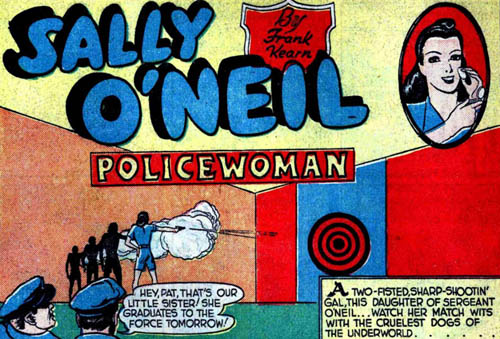
…and even other superheroes. Like Merlin, a magician with a respectable total of 26 Golden Age stories.
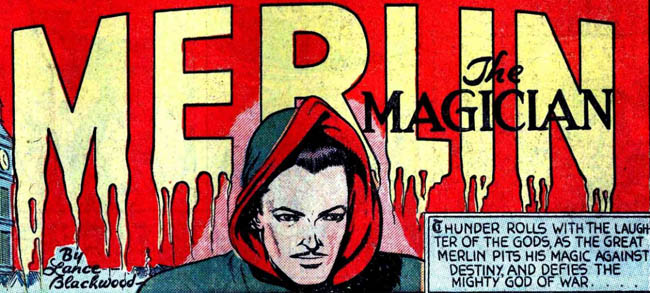
He gets his powers because he descends from the actual Merlin and fights war, poverty and hunger.
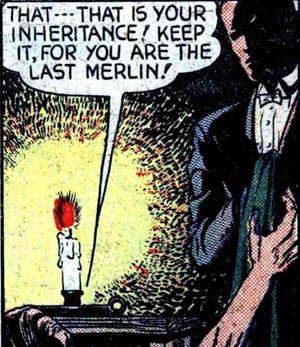
By which I mean he fights the literal god of war Mars and his henchmen, way before Wonder Woman.
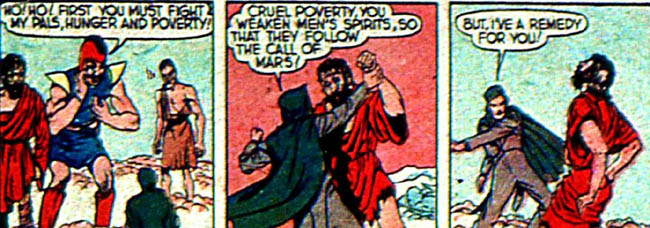
The kid alien Wonder Boy… also has 26 Golden Age stories.
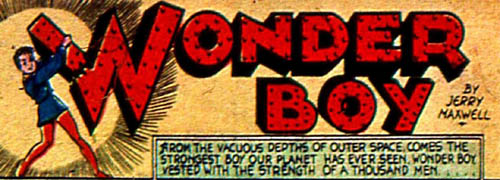
By this time basically every single story set in the present has SOME connection to World War II, more than a year before Pearl Harbor.
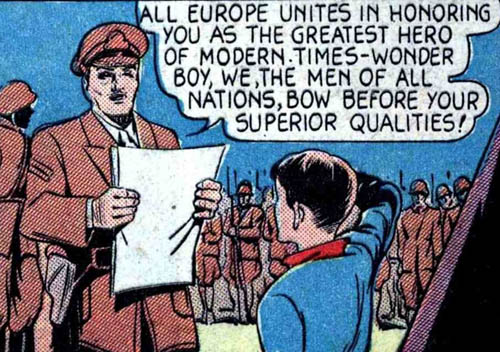
Flash Gordon wannabe Cyclone, on the other hand, only lasted 4 stories.

Appropriately enough, the same comic that creates Uncle Sam also has Paul Bunyan. He lasts a shocking 22 stories.
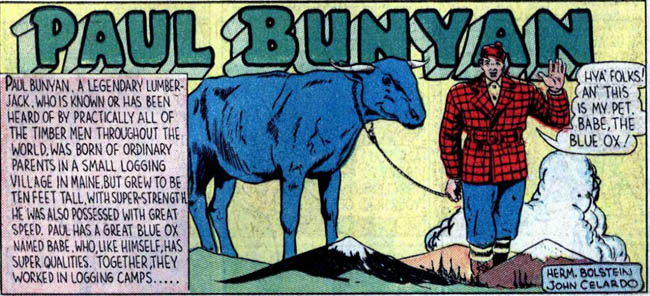
And finally we have Kid Patrol, which predates the Newsboy Legion by two years.
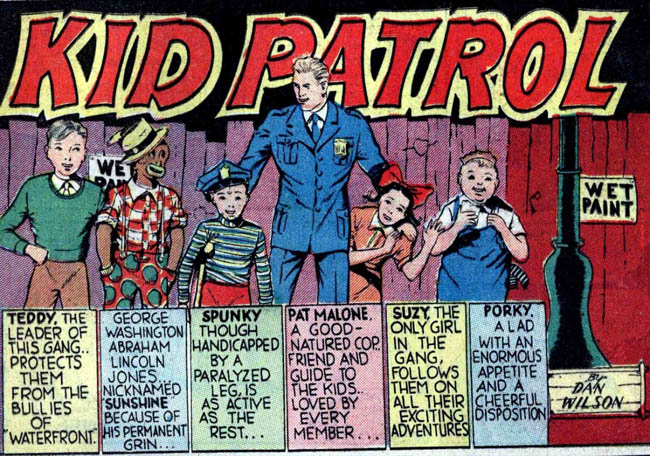
I’ve been vocal about my distaste for the Newsboy Legion, but I’ll take Flippa-Dippa over “Sunshine” here any time.

You want to know how many Kid Patrol stories there are? THIRTY-FOUR.
As I’ve said before it didn’t take much in the Golden Age to be popular enough to get a couple dozen stories, but COME ON!!!

The Shield could not be reached for comment as he has fallen on his back like a beetle and is currently frantically waving his arms and legs trying to get up.